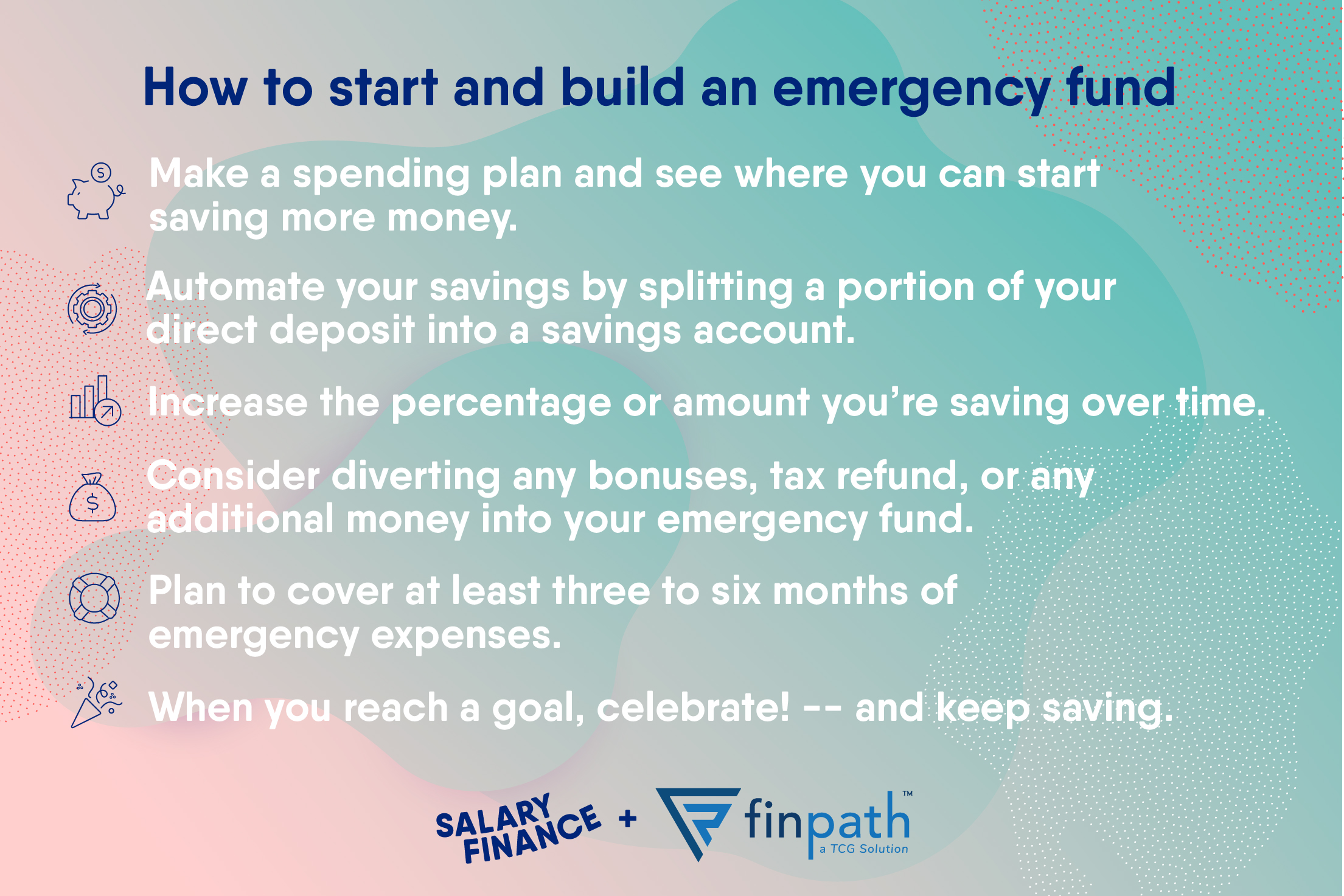
An emergency savings fund is an important part of your overall financial health. Financial experts talk a lot about why you should have one, but if you've ever personally experienced a financial shock you know firsthand just how important they truly are.
Emergency funds can give you peace of mind, and help keep you afloat in a time of need without having to use credit cards or take on high-cost debt. Even if you are not currently going through a financial shock, it’s worth thinking about if you have adequate savings to handle a major unexpected event. If the answer is no, or if you are unsure, here are some steps you can take to build up an emergency fund.
Plan to cover at least 3-6 months of expenses
The amount you should save in your emergency fund depends on your individual financial and personal circumstances, but many financial experts recommend having enough to cover three to six months’ worth of necessary living expenses. If this seems intimidating, set small goals for yourself on how much to save each month – this will help you stay focused on your ultimate goal of having a full emergency fund.
Make a spending plan
If you don’t have an emergency savings fund, the first step to building one up is to start saving more money, which is easier said than done. Making a spending plan can help you identify what you’re currently spending each month, and where you may be able to find additional savings. Calculate your current expenses, and consider eliminating non-essential purchases. If you are currently unemployed or living paycheck-to-paycheck, check out our guide on how to create a spending plan you can realistically stick to.
Automate your savings
If you receive your paycheck via direct deposit, consider splitting a portion of it into a savings account set up as your emergency fund. This makes saving in your savings account as automatic as paying taxes or making retirement fund contributions. You won’t miss the money as much, because it will never hit your checking account.
Increase the amount you’re saving
Depending on your financial situation, you may only be able to save a small amount at first. That’s okay – starting small is better than not starting at all. As your financial situation improves, consider increasing the amount you’re saving each month to accelerate your goal. This may look like diverting your current credit card payment amount to your emergency fund once you’ve paid off your bill, or using a raise in pay as an opportunity to increase your savings goals.
Use your bonus and tax refund
A great way to build up your emergency savings quickly, is to deposit some — or all — of your annual bonus, tax refund, or any additional lump sum payment into your emergency fund.
When you reach a goal, celebrate! (And keep saving)
Building up an emergency fund is a huge accomplishment. Recognize the progress you’re making along the way, and stay focused on the reason you decided to build up your emergency fund in the first place. You’ve got this!






